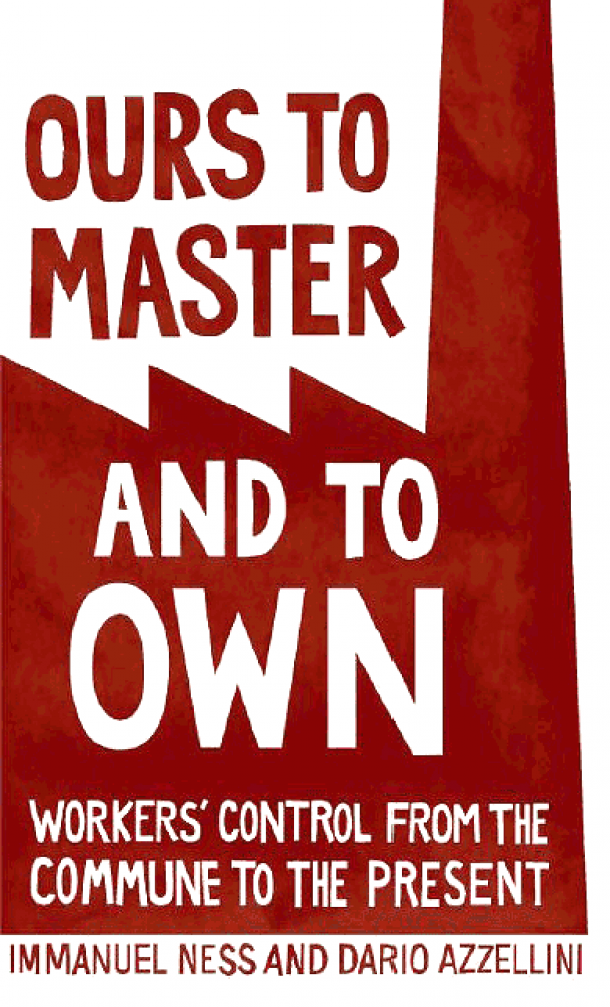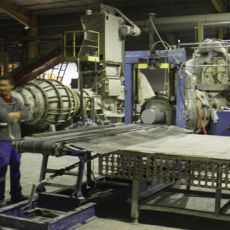Book Review: "Ours to Master and to Own: Workers’ Control from the Commune to the Present"
Immanuel Ness and Dario Azzellini, eds., Ours to Master and to Own: Workers’ Control from the Commune to the Present - Chicago: Haymarket, 2011
Ours to Master and to Own is a compilation of articles offering a historical and global overview of workers’ efforts to gain control over their workplaces, the economy, and governance. It is wonderfully organized in both a chronological and thematic logic, from the nineteenth century through the early twenty-first century, while also moving from a general historical overview toward more specific explanations of how worker democracy was implemented and fought in particular cases. The book sharply illustrates the struggle for economic demo- cracy, its various manifestations and possibilities, and the limitations posed by the larger context of internal political struggles in both capitalist and socialist nations. In their analysis, the authors take the view of rank-and-file workers as they seek to influence their working environment and community life. The essays bring out the various political interests which have undermined workers’ selfmanagement. The players include not only capitalist governments and employers, but in many instances also the authoritarian leaderships of socialist or communist political parties and labor unions. Under these conditions, workers’ efforts have usually been either unsuccessful or short-lived.
The first part offers a historical overview of the revolutionary workers’ movements in Russia, Italy, Spain, France, Germany, and Britain through the first half of the twentieth century, with a brief reference to Chile in the 1970s. It illustrates the national and international political economy in each case, and their relationship with the ongoing debates regarding the best strategy toward a communal or socialized economy. The syntheses of these complex processes into various short articles are commendable, for they not only unravel the relationship between the various players but also address the theoretical visions that inspired the mobilizations. Although I felt frustrated by the broad sweep of the treatments, the implied longing for the visions in the movements, and missing references to the lived reality of the democratic process, this section offers a necessary overview of the political economy underlying the struggles and serves as the basis for understanding the more specific cases explored in the rest of the book.
Part II revisits the earlier movements, addressing the implementation of workers’ control in Germany, Russia, Italy, and Spain. The authors explore the organizational structure of the democratic workplaces and the battles for power between these new forms of organization and pre-existing ones, such as unions and socialist, communist, or social democratic political parties. These chapters make the history of Part I more tangible, yet still remain at the meso-level.
Based on two case studies, Yugoslavia and Poland, in Part III the authors illustrate the struggles for worker control under state socialism, showing the mechanisms through which the state retained control over the workplace, negating the workers’ efforts in self-management of not only their workplaces but also the economy.
Similarly, Part IV explores workers’ struggles for control in Java right after Indonesia’s independence (1945–46), Algeria in the 1960s, and Argentina and Portugal in the 1970s. In each of these cases, we are offered a brief historical context of either colonialism or military rule, an explanation of the factors conducive to self-manage- ment efforts, and an account of the political struggles leading to their demise. We gain a general sense of the organization of these nascent democratic structures, the threat they posed to leftist as well as rightist powers, and the mechanisms through which those powers quelled the threat.
We return to Europe and the United States in Part V, learning about workers’ struggles for control in Britain, the United States, Italy, and Canada. Alan Tuckman addresses British workers’ efforts beginning in the 1970s and moving through Thatcherism in the 1980s. Less known are efforts in the United States. Immanuel Ness offers a concise summary of such struggles, from workers’ mobilizations in the 1930s to their decline but continued efforts from the 1940s through the 1990s, closing with the well- publicized wildcat strike at Chicago’s Republic factory in 2008. Patrick Cuninghame narrates Italy’s Autonomia Operaia (Workers’ Autonomy) movement during the 1970s, illustrating the relationship workers in this movement had with council delegates, unions, and factory vanguards, as well as their direct action efforts, repression and defeat. Elaine Bernard tells the story of British Columbia telephone workers’ occupation in the early 1980s. This too is an inspiring case, where workers move away from the traditional strike as a weapon against the employer, instead taking over the production site while providing 186 Socialism and Democracy telephone service to customers. This detailed story of movement and countermove- ment nicely illustrates the capacity of workers to manage their workplaces very successfully, although briefly.
The last section brings the reader to efforts between the 1990s and the present. Arup Kumar Sen explores two labor struggles in West Bengal, addressing the possibilities and limitations of workers’ democracy in the context of a Communist-ruled state in India that functions within the national capitalist system. Marina Kabat, in her analysis of Argentina, highlights cooperatives’ role in sustaining a capitalist economy, noting that the government prefers the approach of worker buyouts – whereby workers take on the companies’ debts – over that of nationalization. Dario Azzellini’s article addresses the struggles for worker control in Venezuela, describing the government’s efforts to encourage worker ownership and self-management, and analyzing the mixed outcomes. Finally, Mauricio Sarda de Faria and Henrique T. Novaes address the experiences of recovered factories in Brazil, recognizing the key role unions have played in implementing selfmanagement.
A central theme in Part VI is the tension between two models, the cooperative enterprise versus the nationalized business run by its workers. While the authors tend to see cooperatives as manipulable to sustain the capitalist system, the democratiza- tion of nationalized businesses proves also somewhat elusive.
Throughout the book the authors grapple with two sets of battles: against the logic of capitalism and against the logic of the bureaucratic or authoritarian state. While the authors encourage readers to recognize the potential for self-management, for the most part the reader is left with a sense of defeat, as workers have not been successful in doing away with capitalism or bureaucracy. Missing are references to many micro-analytical case studies of the social relations of production, such as those exploring Mondragon, Beedi co-ops in India, Cruz Azul and Pascual in Mexico, and others. There is an underlying assumption that a market economy equates to capitalism, that there is only one interpretation of equality and fairness (equal pay for all kinds of work), and that the only way to overcome alienation is to end the division of labor. Many scholars who closely study alternative organizations of work question these assumptions; yet such challenges are not fully addressed in these articles, except for some passing comments in the last section.
Nevertheless, this is a valuable text for undergraduate and graduate students who are becoming acquainted with the field, as well as for activists or practitioners. The cases open wonderful opportunities for further discussion regarding the paradoxes presented by the desire to have worker control – as suggested by the lack of interest or participatory culture among some workers, the potential and limitations of cooperatives compared to nationalized enterprises, and the clash between unions’ bureaucratic and oligarchic tenden- cies and workers’ search for participatory democracy. This collection also offers an excellent summary of workers’ efforts throughout the world to gain control over their workplace, economy and society.
© 2012 Sarah Hernandez
Division of Social Sciences - New College of Florida
shernandez@ncf.edu





